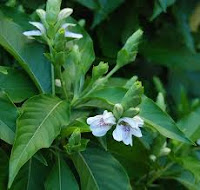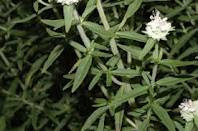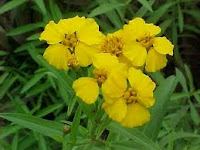MOUNTAIN LAUREL, CALICO BUSH, SPOONWOOD, KALMIA LATIFOLIA
Mountain laurel is indigenous to the north Eastern parts of North America . It is an evergreen shrub which usually doesn’t exceed ten feet in height, although it can grow to tree size and achieve heights of forty feet with a diameter of two feet.
It is the only one of the Kalmia genus which grows to tree size. It is known by several other names including Sheep laurel and a synonym for the species is Kalmia lucida. It is the state flower of Pennsylvania .
 The mountain laurel is a member of the Ericaceae family or heather (ling) family of plants and as such is related to the trailing azalea, yellow bird’s nest, wintergreen (Gaultheria procumbens), the strawberry tree and the Greek strawberry tree, as well as bilberries, blueberries and cranberries.
The mountain laurel is a member of the Ericaceae family or heather (ling) family of plants and as such is related to the trailing azalea, yellow bird’s nest, wintergreen (Gaultheria procumbens), the strawberry tree and the Greek strawberry tree, as well as bilberries, blueberries and cranberries. Its glossy green leaves closely resemble those of the European laurel or bay tree (Laurus nobilis). However the leaves and indeed the whole of the mountain laurel is poisonous. The wild variety of mountain laurel usually has pink flowers which turn to white. They flower between late May and June with the brown-tan fruits appearing just after the flowers fade, and it ripens in September.
The plant is an attractive one and so has been cultivated with many cultivars and colours of flowers available if you want to have it in your garden. It is toxic and can be lethal to animals, although it would seem that deer are unharmed by it. People have apparently suffered ill-effects in the past after eating pheasants which had fed on mountain laurel. There is also a documented case of poisoning in the USA in 1790 according to Neltje Blanchen in Nature’s Garden, which was published by Doubleday, Page and Co in 1900.
In that book it is related that there were fatal cases of poisoning after people had eaten wild honey. It was traced back to the Mountain laurel.
 The expressed juice of the plant or a decoction of the leaves is believed to have been used by Native Americans to commit suicide in the past. It is hardly ever used in modern herbal medicine, although it is used in homeopathy to cure the symptoms which a large dose can provoke, for example vertigo, nausea, headache, loss of vision, and a number of other ailments. It is also used for rheumatism, or at least the pain of that complaint.
The expressed juice of the plant or a decoction of the leaves is believed to have been used by Native Americans to commit suicide in the past. It is hardly ever used in modern herbal medicine, although it is used in homeopathy to cure the symptoms which a large dose can provoke, for example vertigo, nausea, headache, loss of vision, and a number of other ailments. It is also used for rheumatism, or at least the pain of that complaint. An infusion of the leaves has been used externally for skin problems, and inflammatory problems. This was also used to clean wounds and to get rid of external parasites such as lice and tics. Internally an infusion of the leaves was used for its astringent and sedative properties, to stop haemorrhages, for diarrhoea and dysentery, for fevers; neuralgia, angina and syphilis.
An infusion of the leaves has been used externally for skin problems, and inflammatory problems. This was also used to clean wounds and to get rid of external parasites such as lice and tics. Internally an infusion of the leaves was used for its astringent and sedative properties, to stop haemorrhages, for diarrhoea and dysentery, for fevers; neuralgia, angina and syphilis. A yellow-tan dye can be obtained from the leaves of Mountain Laurel, and the plant can be used as a living hedge. The wood is, or at least was, used for fuel and can be used to make small items such as tool handles. The roots were used to make spoons, giving it one of its names- Spoonwood.
















































